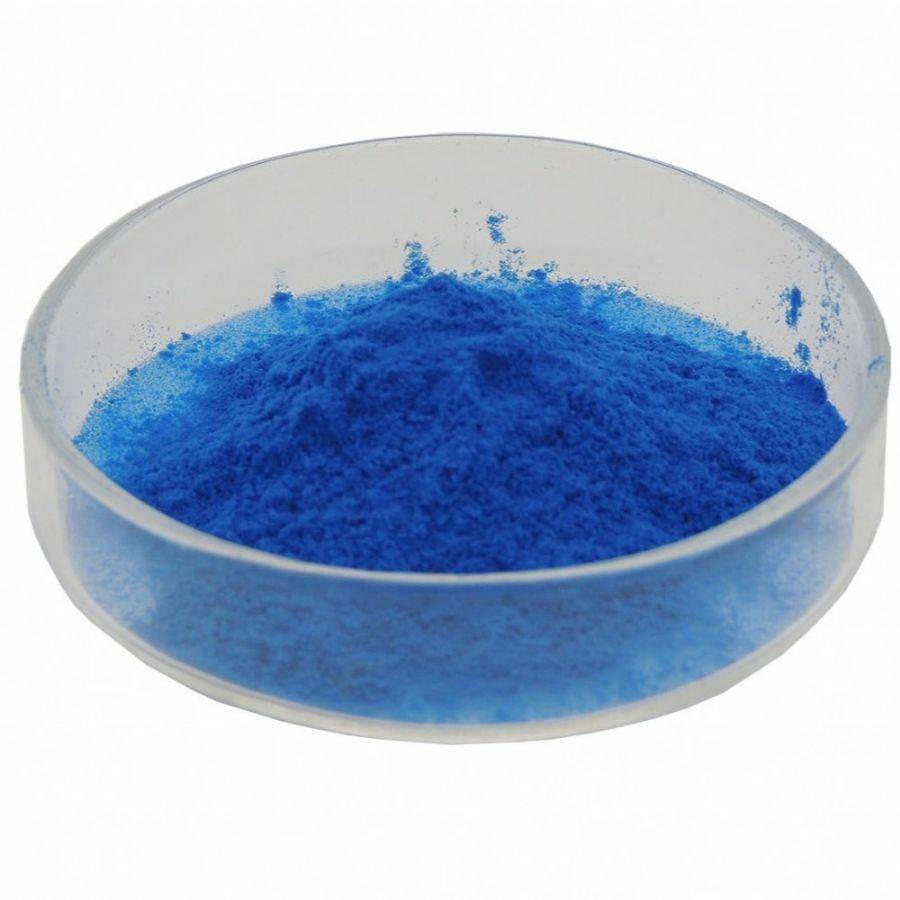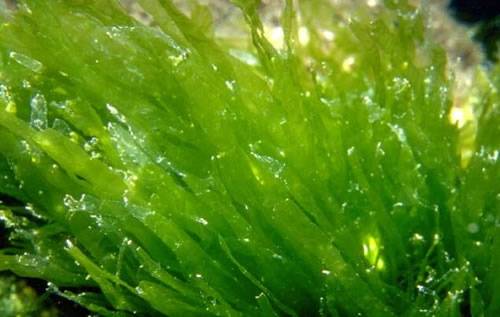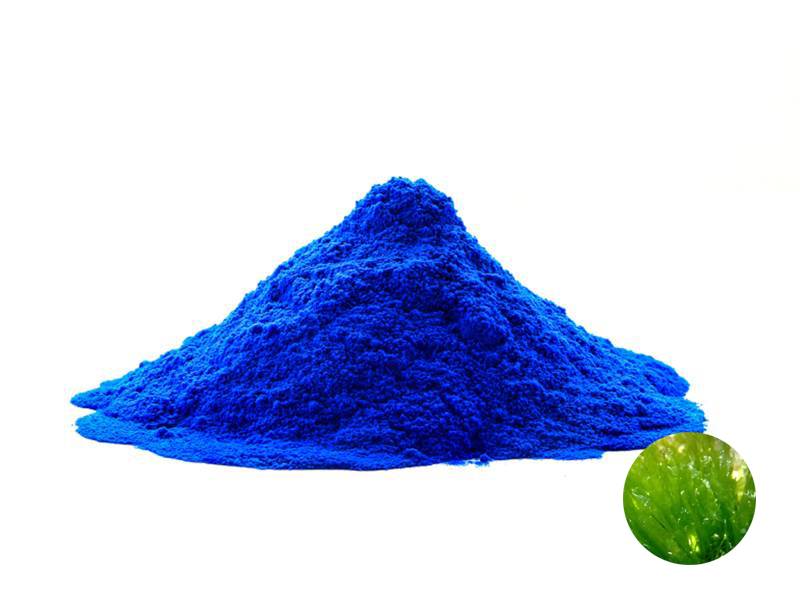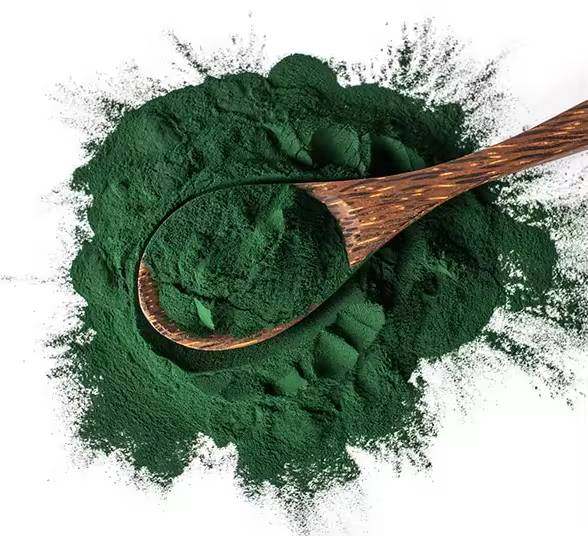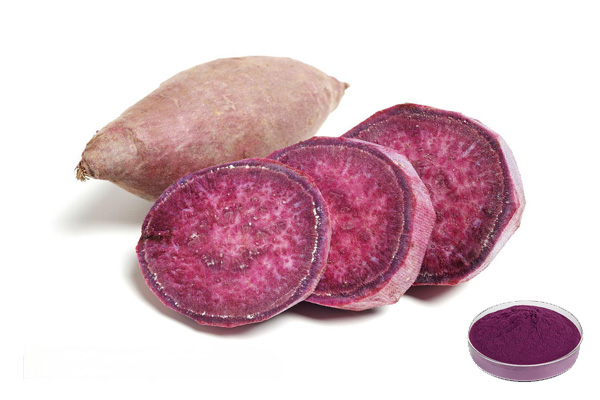Phycocyanin粉
出典スピルリナPlatensis
有効成分:スピルリナ集中
规格:E18
Testing Method: UV
- 記述
- データシート
- 証明書
-
フィコシアニン粉末とは何ですか?
フィコシアニン(phycocyanin)は、スピルリナから単離されたダークブルーの美しい外観の粉末である。それは、タンパク質、優れた天然食品の着色、および健康食品の両方です。米国fdaによって承認された天然の青色色素である。欧州連合(eu)では着色食品としてアルギン酸を指定しており、食品中での使用は制限されていない。藻類の青い蛋白質は細胞内の蛋白質の一種であり、壊れたスピルリナ細胞の中に溶解したエキスの沈殿物を介して得られた抽出は青いので、藻類の青い蛋白質と呼ばれる。藻類の青いタンパク質は、それが広く健康製品、化粧品、食品添加物や他の分野で使用されている様々なアミノ酸や抗酸化物質が含まれています。
のPhycocyanin 粉提供全部绿色の スピルリナからは、濃縮、遠心分離、濾過を経て穏やかにスプリング技術を抽出し、水のみを添加剤として添加しているため、非常に安全な天然の青色色素です。豊かでたんぱく质を含むγ-linolenic酸脂肪酸8种类のアミノ酸が人体で定められたを究明するための容易になったので人体と肉体を吸収するのを抑制し、栄养価の高い。
green spring technologyは2000年に設立され、お客様に自然で安全な有機植物抽出物を提供することを使命としています。ハラール、コーシャ、cosmos、brc、ifs、fda、isoなどの複数の認証を取得しています。青泉には体系的な品質管理システムがあり、厳格に品質管理を実施しています。すべての製品は追跡可能で、米国薬局方、日本薬局方、欧州薬局方などの国際基準に準拠しています。私たちは、信頼できるサードパーティのテストレポートを提供することができます。
规格:
商品名
Phycocyanin粉
CASない
11016-15-2
ソース
スピルリナPlatensis
有効成分
スピルリナ集中
仕様
E18
Testing Method
UV
外観
青い粉末に赤い蛍光
残留農薬
(ec) no . 396/2005に適合しています。
法が定め
euの規制に準拠しています。
見積もりをお探しですか?Benefits:
Anti-inflammatory
Phycocyanin inhibits the oxidative luminescence reaction of luminal under alkaline conditions by acting on the phagocytic respiratory burst, resulting in the reduction of free radicals (-OH, H2O2, RO-) and excess peroxides. There is evidence that reactive oxygen species such as superoxide anion, hydrogen peroxide, and hydroxyl radicals, can cascade arachidonic acid, resulting in mast cell degranulation and release of histamine, 5-hydroxytryptamine, tumor necrosis factor, and other inflammatory mediators. Phycocyanin happens to be able to scavenge peroxide, hydroxyl, and alkyl radicals.
Hepatoprotection
A study of the pharmacological activity of phycocyanin against hepatotoxicity induced by R-(+)-longifolium menthone and CCl4 in rats showed that phycocyanin significantly reduced the hepatotoxicity induced by the production of large amounts of free radicals by both compounds. Phycocyanin significantly reduced the phagocytosis and the associated respiratory burst activity of chytridial cells, which was based on the principle that phycocyanin reduced the tumour necrosis factor TNF-α produced by oxidative stress and nitric oxide produced in the hyperthyroid state. Thus, the hepatoprotective effect of phycocyanin is mainly attributed to its inhibition of the production of reactive metabolites in oxidative reactions and its effective elimination of free radicals.
Elimination of Cataracts
Phycocyanin inhibits D-galactose-induced apoptosis of human lens epithelial cells (LECs) via mitochondrial and unfolded protein response pathways. Lens epithelial cell apoptosis is an important cause of cataract formation, and prevention of LEC apoptosis could be a therapeutic strategy for cataracts. The experimental results showed that phycocyanin could reduce the incidence of sodium selenite-induced cataracts by regulating the levels of antioxidant enzymes in vivo and ex vivo, such that oxidative stress in vivo was reduced.
Protection of Blood Vessels
Experiments have confirmed that the phycocyanin in Spirulina inhibits the generation of reactive free radicals and cyclooxygenase-2, thus increasing the level of antioxidant enzymes in the body, effectively improving the inflammatory damage caused by oxidative stress in atherosclerotic animals, and has the effect of regulating blood lipids.
Applications:
In Healthy Food:
Phycocyanin can improve the metabolism of skin cells, resist the attack of free radicals, and keep the skin smooth and delicate. In addition, algal blue protein has the effect of lowering blood pressure, lowering blood fat, reducing fatigue, etc., which helps to enhance the health of the body.
In Cosmetics:
Collagen and hyaluronic acid, which are contained in Phycocyanin powder, can penetrate into the deeper layers of the skin to improve the elasticity and firmness of the skin, preventing the skin from sagging and developing wrinkles. It can also lighten melanin, brighten skin tone, effectively fight oxidation and protect skin from environmental stimuli such as UV rays.
In the Food Field:
The antioxidant effect of phycocyanin powder is very significant, which can inhibit lipid oxidation reactions in food, prolong the shelf life of food, maintain the color, taste and nutrient content of food, and improve the quality of food. In addition, algal blue protein can be added to products such as dairy products, meat products, fruit juices, and dietary supplements to increase their nutritional value.
-
ダウンロード
Phycocyanin粉COA


 英語
英語 フランス
フランス スペイン
スペイン ロシア
ロシア 韓国
韓国 日本
日本



